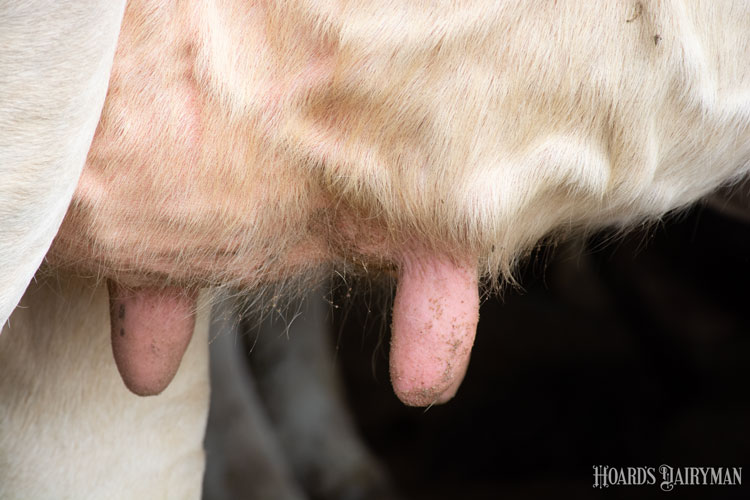
“When we have a clinical mastitis case, we’ve lost the battle,” said Paul Virkler, D.V.M., during a Cornell Cooperative Extension webinar. However, the way we approach mastitis determines if we create even further losses, he added.
The biggest loss from a case of mastitis is discarded milk. If you are treating cows that don’t need or won’t respond to antibiotics or treating cows for longer than necessary, Virkler emphasized that you are exacerbating your losses by creating more wasted milk.
To know if a cow will respond to treatment, the best course of action is to perform a milk culture. “We need some cultures to know where to go and how to address your problem,” described Virkler, who works with dairies of all sizes as part of Cornell’s Quality Milk Production Services team.
Identifying the pathogen will determine what treatment, if any, can attack the organism. Additionally, you will be able to determine if you have an environmental or contagious pathogen, which can help target areas of improvement to avoid future infections.
With environmental pathogens like Streptococcus species, E. coli, Klebsiella, and Lactococcus, the reservoir is often manure. Virkler described that this means attention needs to turn to areas like stall and housing cleanliness and dry cow management.
On the other hand, contagious pathogens such as Staphylococcus aureus, Streptococcus agalactiae, and Mycoplasma are harbored in the cow. Ensure milkers wear gloves, milk infected cows last or cull them, and avoid bringing in new infections to limit the spread of these organisms. Virkler also encouraged efforts to keep teat skin healthy and milking equipment functioning properly.
Throwing away extra milk
An average case of mastitis will manifest as bad milk for three to five days whether the cow is treated or not, Virkler said. That milk should clearly be kept out of the tank. However, holding off on treating cows that are not going to respond to antibiotics anyway means you will not also be discarding withdrawal period milk from cows that spontaneously cure.
“If we’re treating based on clinical signs rather than a protocol, we may be treating some cows too long,” Virkler continued. This leads to more milk being thrown away, especially because the cows most at risk for mastitis are older cows at peak milk — likely the highest producers in the herd.
Treating cows, drying off quarters, or culling cows are all short-term strategies to deal with an elevated somatic cell count or issues with mastitis. They will make a difference, but the challenge is that without addressing the root of the problem, the same concerns can pop up. The long-term ideal solution, of course, is to avoid mastitis from happening in the first place. “If we prevent those cases, then we don’t have to deal with those high cell count cows,” Virkler said.








